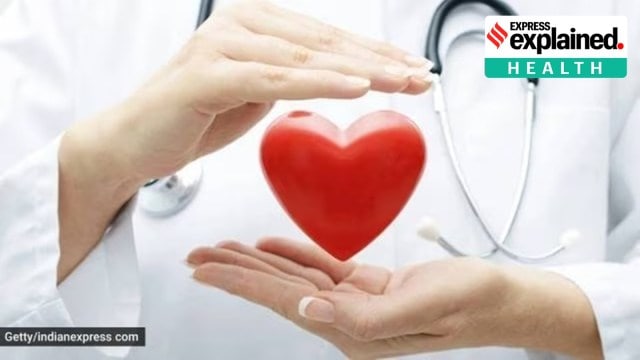Do high levels of ‘good’ cholesterol mean lower risk of heart disease? How HDL-C is actually linked to cardiovascular health
When looking at diagnostic test results, it is important to understand the difference between correlation and causation, to decide on the appropriate intervention. Here, we explain the link between HDL-Cholesterol and heart health.
 HDL-Cholesterol is correlated with low Cardiovascular disease risk.
HDL-Cholesterol is correlated with low Cardiovascular disease risk.Health improvement is a popular new year resolution, and the first step towards implementing it is often a diagnostic test. A crucial thing to understand in such test results is which markers show correlation and which causation. For example, HDL-Cholesterol is correlated with low Cardiovascular (CV) disease risk. But ‘correlation is not causation’ is an oft-repeated warning.
There is much confusion around these two terms and the ensuing logical actions. Much of the confusion exists because correlations do predict risk. However, what they don’t do is identify the underlying causative factor of the disease.
Correlation, causation, and intervention
A common example to explain this confusion is the link between ice cream sales and shark attacks. Presumably, a model could predict the number of shark attacks based on the sales of ice cream on a beach — the two data sets are correlated, because higher sales of ice cream would mean a bigger crowd on a beach and a hot day, which could mean more people going into the water and being attacked by a shark. But no one would suggest banning ice cream as a strategy to reduce shark attacks, because ice cream sales do not cause the attacks.
The important point is that there is no identifiable intervention strategy (for eg., reducing ice cream sales) when two parameters are simply correlated. Intervention is logical only when a cause is established.
Popular media adds to this confusion by headlines such as ‘Coffee is linked with reduced risk of CV disease’, or ‘Chocolate associated with lower death rates’. The words “linked” and “associated” mean correlation. Therefore, an intervention such as increasing coffee intake is not guaranteed to lead to a risk-reduction in CV disease.
The case of HDL-C
HDL-C, or high-density lipoprotein cholesterol, is one of the most confounding markers. HDL-C’s negative correlation with CV disease has been so strong that it was labelled the “good” cholesterol, indicating the desire to have high levels of it. After the association was discovered during initial studies in Framingham, US, many pharmaceutical agents that raised HDL-C were tested in clinical trials in an attempt to prove the causal link to CV disease. These trials, however, failed to show reduced CV disease risk despite showing increases in HDL-C.
Colloquially, lipids and cholesterol are discussed as LDL, HDL, and triglycerides. The more appropriate acronyms are LDL-C and HDL-C. Whereas LDL and HDL refer to the particles, LDL-C and HDL-C refer to the cholesterol contained in these particles — the part that is correlated with, or causative for, CV disease. These particles also contain other molecules such as triglycerides, other fats, and proteins.
The main difference between LDL and HDL is the protein that “binds” all of these different elements. LDL and HDL are not fixed entities with a defined composition through their lifetime. They are constantly exchanging the cholesterol (and other elements) within them with their surroundings and are ever-changing. HDL-C’s association with CV disease is because of the HDL particle’s role in a pathway known as reverse cholesterol transport (RCT). Cholesterol is a vital component of all cells and tissues. The problem arises when it gets trapped in a “wrong” place, such as the lining of the coronary arteries. Such deposits are responsible for an eventual heart attack. The RCT pathway removes cholesterol from the cells and tissues (known as cholesterol efflux) through HDL that enters into the bloodstream, and can be measured as HDL-C. In the bloodstream, the HDL can exchange the cholesterol with other particles and eventually transports the cholesterol back to the liver for elimination to complete the RCT.
The efflux rate
Thus, the critical element to understand is the rate of removal of cholesterol (the efflux rate) from these tissues via HDL. The only routinely available measurement, however, is the concentration of HDL-C in blood – and this measurement sheds absolutely no light on the efflux rate.
Post some failed clinical trials, additional studies were conducted to understand the efflux rate and these showed that some of the drugs do increase the efflux. Yet, paradoxically, there is no impact on the CV risk. Thus, the details of HDL’s role as transporter of cholesterol and contributor to the CV risk remain a mystery. Presently, HDL-C is viewed as an indicator of overall good health (as an example, exercise increases HDL-C, smoking decreases HDL-C) and its correlation with CV risk is a reflection of the association of good health and low CV risk.
The HDL-C intervention trials have shed light on the complexity of the HDL-C pathway and have shown the perils of correlational factors as intervention targets. A high HDL-C number can be welcomed as it correlates with a low CV risk (it is important that this number is not viewed in isolation but with attention to the other parameters), but a low HDL-C need not be fretted over, since there are other modifiable factors such as LDL-C, Apolipoprotein-B (ApoB), and overall health interventions such as exercise and diet that reduce the CV risk.
As for any other correlational markers, when, while sipping your morning coffee, you read another headline about the benefits of the beverage, do pay attention to it — not because the coffee is going to help reduce disease risk, but only because the morning cuppa is enjoyable.
Tushar Gore is the managing director of Resonance Laboratories, a niche pharmaceutical manufacturer. He studied at IIT-Bombay and the University of Minnesota, and has worked at McKinsey and Novo Nordisk. His focus area is pharmaceuticals
- 01
- 02
- 03
- 04
- 05






































